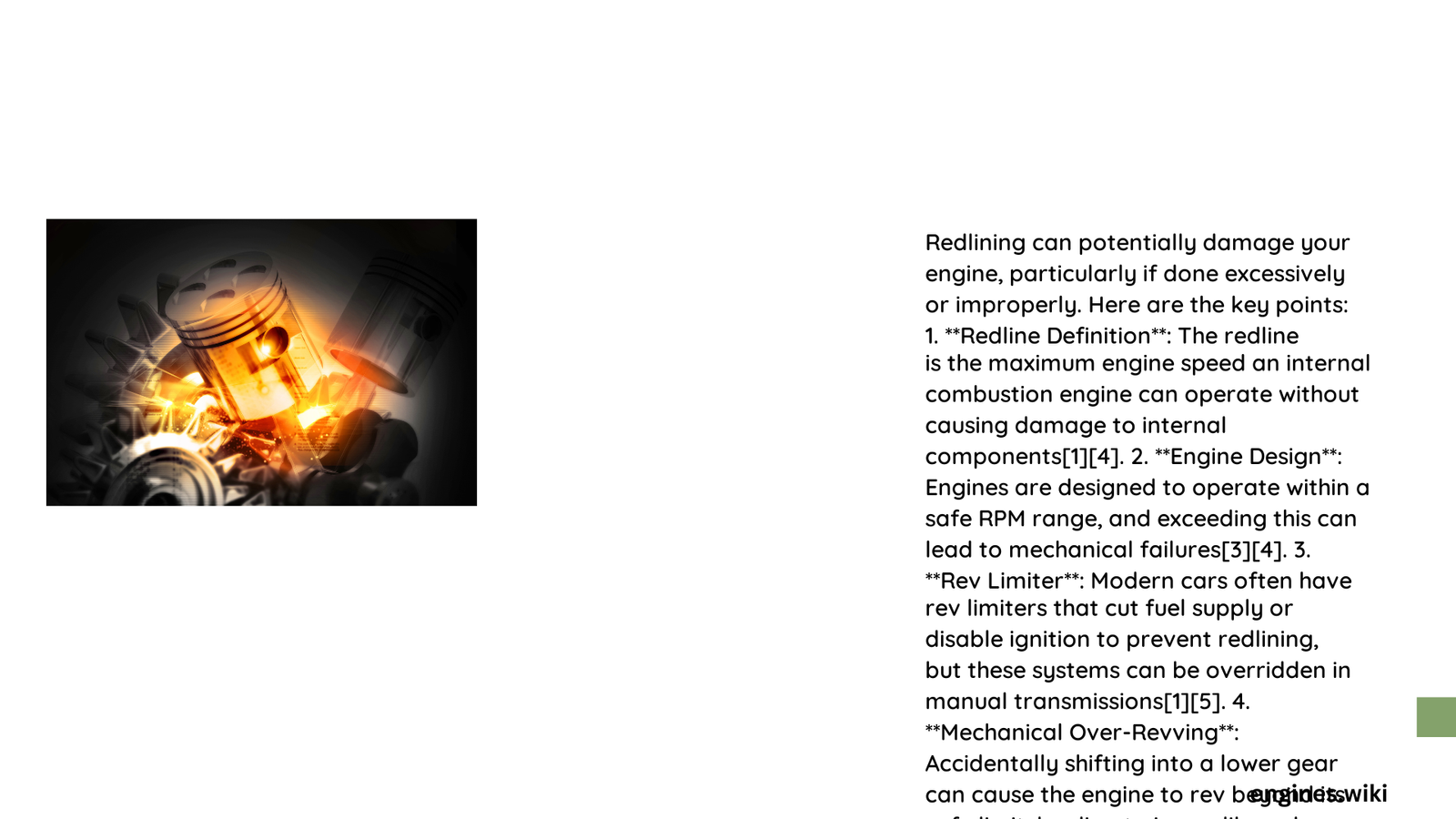Redlining an engine represents a high-stress scenario where vehicle operators push their engine’s RPMs to the absolute maximum limit. While momentary redline experiences might not immediately destroy an engine, consistent and prolonged high-RPM operation can cause significant mechanical stress, accelerated component wear, and potentially catastrophic engine failure across various vehicle types and engine configurations.
What Happens When You Consistently Redline?
Redlining an engine involves operating at or near the maximum recommended RPM, which can trigger multiple mechanical stress points and potential damage mechanisms. Understanding these risks is crucial for maintaining long-term engine health and performance.
How Do Different Engine Types Respond to Redlining?
Naturally Aspirated Engines
- Typical RPM limits range between 6,500-7,500 RPM
- Maximum theoretical RPM can reach 10,000-13,000 RPM
- Advanced valve systems can support up to 15,000-25,000 RPM
Turbocharged Engines
- Generally lower RPM tolerance compared to naturally aspirated engines
- Primary limitations include:
- Knock prevention
- Thermal mechanical stress
- Boost pressure management
What Mechanical Components Suffer Most?
| Engine Component | Redline Impact | Potential Damage |
|---|---|---|
| Pistons | Extreme Heat Buildup | Ring Wear, Potential Seizure |
| Valves | High Mechanical Stress | Valve Train Failure |
| Crankshaft | Increased Vibration | Fatigue Failure |
| Connecting Rods | Rapid Acceleration Forces | Potential Structural Failure |
What Are the Immediate Consequences of Redlining?
- Rapid Heat Generation
- Increases friction
- Accelerates component wear
-
Risks thermal breakdown of lubricants
-
Oil System Stress
- Faster oil degradation
- Reduced lubrication effectiveness
-
Increased risk of premature engine wear
-
Mechanical Component Fatigue
- Accelerated wear on moving parts
- Higher risk of unexpected failure
- Potential catastrophic engine breakdown
How Long Can an Engine Withstand Continuous Redlining?
Continuous redline operation can cause significant damage within:
– 10-20 minutes: Oil breakdown begins
– 30-60 minutes: High risk of catastrophic failure
– Repeated short-duration redlining: Cumulative damage over time
Warning Signs of Redline-Induced Damage
- Decreased compression ratios
- Unusual engine noises
- Reduced oil pressure
- Increased exhaust smoke
- Vibration during high-RPM operation
Expert Recommendations

- Avoid prolonged high-RPM operation
- Follow manufacturer’s recommended RPM limits
- Use high-quality synthetic lubricants
- Perform regular maintenance
- Monitor engine performance indicators
Technical Insights
Professional racing and high-performance engines are specifically designed to handle extreme RPM ranges. However, standard consumer vehicles are not built with the same robust engineering tolerances.
Conclusion
While momentary redlining might not immediately destroy an engine, consistent high-RPM operation poses significant risks. Understanding your vehicle’s mechanical limitations and practicing responsible driving can dramatically extend engine life and performance.
References:
– SAE International Engine Performance Research
– Automotive Engineering Journal
– Professional Motorsports Technical Insights
